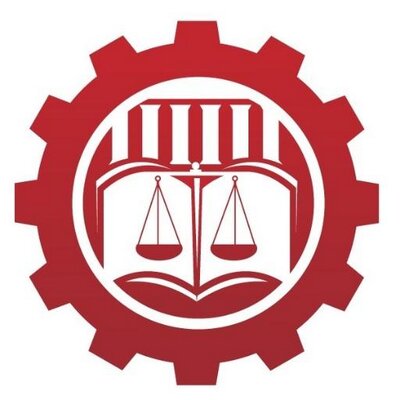'The future is now,' says ABA president at Stanford CodeX conference

With technologists, entrepreneurs and lawyers gathered, the Stanford Law School CodeX FutureLaw conference attempted to break down silos yesterday. But, with a primarily legal audience, that is no small feat, according to ABA president Hilarie Bass.
“Lawyers are a tough audience,” she said during her morning keynote address. “We are accustomed to looking in the rearview mirror.”
In a pedantic profession built on precedent, the idea of forging a new path is often anathema to a lawyer’s training. However, Bass made clear that the gathering, now in its sixth year, was an opportunity for lawyers to learn from technologists and find new ways to collaborate.
To that end, Bass used her allotted time to describe various initiatives being undertaken by the ABA to create new software projects, improve the adoption of existing technology by lawyers and help lawyers get “unstuck” from how they have done things in the past.
The ABA’s Center for Innovation to develop new online tools, its partnership with the Legal Services Corp. to test novel technology in legal aid offices around the country and its Free Legal Answers virtual clinic were just some of the examples Bass used to illustrate how the organization is thinking about technology’s role in the legal profession.
Throughout the day, panels of speakers similarly focused on novel issues of the present and near future.
Sharad Goel, an assistant professor at Stanford, began the panel sessions by introducing the limitations of algorithms.
“Algorithms are good at what they are good at, and they are incredibly bad at everything else,” he said.
In one example he spoke about bail risk assessment tools—a process where defendants are given a risk number pertaining to their likelihood to reoffend while on release or fail to appear for a court date. With some level of certainty, the tool may offer a risk assessment: However, he pointed out that these tools will not be able to tell you if cash bail is a policy worth having to begin with or if it is more efficient to send a text message to remind the defendant of their court date instead of holding them in jail.
But the algorithms are only half of the puzzle. The data that informs machine-learning tools, a type of algorithm, can also create issues.
Bryan Casey, a CodeX fellow, explained to the audience that autonomous vehicles are built to assess risk and make the safest decisions possible. In one example, he said that an autonomous vehicle passing between a large semi-trailer truck and a smaller car at the same time will stay slightly closer to the smaller vehicle because a potential collision is likely to be less disastrous.
That same codified cost-benefit analysis, however, can have a dramatic social impact as well. As autonomous vehicles become more prevalent and more data can be collected, the algorithms controlling the machines could begin to show a class bias, Casey argued.
The argument goes like this: If a car accident in a rich area of town is likely to pay out a larger insurance settlement than the same accident in a poorer part of town—and that data is fed into the software running the vehicle—then the cost benefit algorithm will conclude that it is less risky to drive fast in a poor neighborhood than a rich one.
This is not a guaranteed future. However, it is a challenge when developers codify risk in computer code, Caseysaid.
On the topic of blockchain, Nathana O’Brien Sharma, program director at Singularity University, and Philippa Ryan, lecturer at the University of Technology Sydney, provided a cogent discussion on a technology that is often obscured by its own hype.
Providing current and potential use examples, Sharma and Ryan explained that blockchain could improve the antiquated bill of lading processes used in the international transport of goods (it is paper-based now); decrease the spread of fraudulent products, like medicine; and cut down on the time an insurance claim takes to process.
“The possibilities could be huge,” Ryan said.
After eight-and-a-half hours focused on what technology can do for the practice of and access to law, the day wound down with a final keynote from Deborah Rhode, professor of law at Stanford and director of the university’s Center on the Legal Profession.
“We are in the early stages of a technological revolution in legal services,” she declared.
However, using Avvo, the lawyer rating and matching service, as her prime example, her talk was a cautionary tale about state bar associations that look to cloister the profession and act as an impediment to change.
Referencing the World Justice Project: Rule of Law Index’s 2012-2013 Report, she pointed out that the U.S. ranks 67th in the world for accessibility and affordability in civil justice—tied with Uganda.
At the same time, she shared slides showing that lawyers spend only 20 percent of their time on legal issues, while the rest is spent on administrative work and finding and retaining clients.
To Rhode, one way to spend more time helping clients and increase efficiency is through technology. However, six state regulators have come down against Avvo Legal Services, a fixed-fee arrangement where Avvo takes a portion for advertising costs.
Rhode, who was an early-stage adviser to the recently acquired company but says she did not benefit financially, said that this is a prime example of state bars stifling, as opposed to fostering, innovation.
“Programs like Avvo Legal Services are the profession’s best hope” to get new clients, she said. “The profession, in the long run, is ill-served by that type of regulatory repression.”
This bookend, while more hard-nosed than Bass’ morning keynote, still echoed the morning’s call that resonated throughout the day:
“Continue to be bold, be adventurous, be creative,” Bass said. “The future is now.”
CodeX #FutureLaw begins with a keynote from @HilarieBass @ABAesq pic.twitter.com/Z8yJjv2NzX
— Integra Ledger (@IntegraLedger) April 5, 2018



